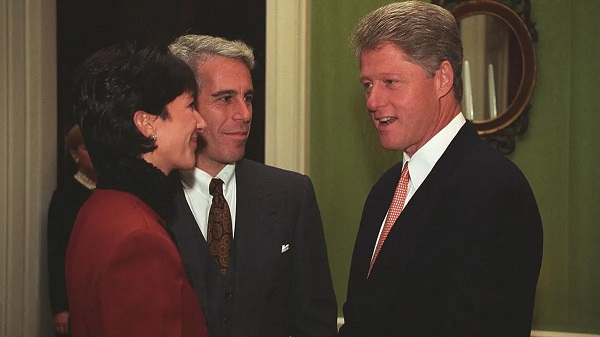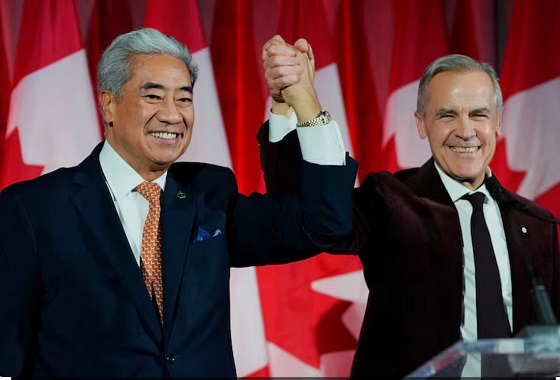International
The Cat Eaters of Ohio

The establishment media called it a racist myth, but is it?
Donald Trump shocked audiences at this week’s presidential debate with the claim that foreign migrants were eating household pets in Springfield, Ohio, a small town currently reeling under the strain of an unprecedented number of new arrivals, mostly from Haiti. “They’re eating the dogs,” Trump said. “They’re eating the cats.”
Reactions on both sides were spirited. Conservative social media accounts created memes that portrayed Trump, dressed in camouflage, and toting heavy weapons, as the savior of innocent pets. There was even a viral TikTok trend, which chopped up Trump’s speech and set it to dance music. “They’re eating the dogs, they’re eating cats,” the music thumped. “Eat the cat! Eat, eat the cat!”
The establishment media was not amused. During the debate, ABC’s David Muir dismissed Trump’s rhetoric with his version of a fact check, citing the Springfield city manager’s statement that “there have been no credible reports of specific claims of pets being harmed, injured, or abused by individuals within the immigrant community.” Other publications went further, blasting the former president for spreading a “racist smear,” a “century-old stereotype,” and a “cat-eating conspiracy theory.”
So, is there any truth to the charge? We have conducted an exclusive investigation that reveals that, yes, in fact, some migrants in Ohio appear to have been “eating the cats,” though not exactly in the manner that Trump described.
Our investigation begins in a run-down neighborhood of Dayton, Ohio, the closest major city to Springfield, about a half-hour’s drive away. We identified a social media post, dated August 25, 2023, with a short video depicting what appear to be two skinned cats on top of a blue barbeque. “Yoooo the Africans wildn on Parkwood,” reads the text, referring to Parkwood Drive. The video then pans down to two live cats walking across the grass in front of a run-down fence, with a voice on the video warning: “There go a cat right there. His ass better get missin’, man. Look like his homies on the grill!”
We spoke with the author of the video, who asked to remain anonymous but confirmed its time, location, and authenticity. He told us that he was picking up his son last summer, when he noticed the unusual situation. “It was some Africans that stay right next door to my kid’s mother,” he said. “This African dude next door had the damn cat on the grill.”
We then identified the home by matching it to the visuals in the video and cross-referencing it with the eyewitness. When we knocked on the door of the first unit, a family answered, telling us they were from the Democratic Republic of the Congo and that all of the surrounding units were occupied by other African migrants.
One of the residents told us that her former neighbors, also from Africa, had lived in the adjacent unit until last month. They had a blue grill and the father would find meat in the neighborhood. “Her dad was going to find meat,” she said. “Her dad was going, holding a knife.” The current residents also showed us a blue grill of the same make and model as in the video, which the former neighbors had abandoned after they moved out. There were at least ten cats wandering around the complex and another resident complained that they were breeding on the property.
According to the original witness, whose son was friendly with the neighbors, there was no doubt about what happened last summer. “They was barbecuing the damn cat!” he said. His son’s mother had previously witnessed the family butchering a mammal on the street, but the cats on the barbecue put him in such a state of shock, he felt the need to film it.
To be clear: this single incident does not confirm the particularities of Trump’s statement. The town is Dayton, not Springfield; cats alone were on the grill, not cats and dogs. But it does break the general narrative peddled by the establishment media and its “fact checkers,” who insisted that this has never happened, and that any suggestion otherwise is somehow an expression of racism.
It takes only a single exception, however, to falsify a hypothesis, and the logical next step, for any honest broker, is to ask if it is happening more often, and elsewhere. It is not implausible. Many developing nations, including the Congo and Haiti, have traditions of animal sacrifice or consumption of what Americans would consider household pets. And if this occurred in Dayton, where the migrant population is relatively small, it could be going on down the road in Springfield, where it is relatively much larger.
Independent journalists are already on the hunt and could reveal more. The Daily Wire has dispatched a reporter to Springfield to investigate. The Federalist has published a police report with allegations that a group of Haitians emerged from a city trail with dead geese in hand. Ohio’s attorney general, Dave Yost, has backed up this claim, arguing that citizens with such firsthand knowledge “would be competent witnesses in court.”
There is a legitimate debate to be had about migration and culture. All immigrants bring with them a particular tradition, which, in the case of countries such as Haiti and the Congo, can include practices that many Americans find disturbing. This cultural divide causes understandable consternation for non-migrants living in the rougher parts of places like Dayton and Springfield. They don’t enjoy the luxury of many in the establishment media, who can maintain a safe distance, condescending to those who raise the alarm while not even bothering to investigate anything themselves.
These revelations do not mean that assimilation is impossible, but the establishment will need to engage in a more honest debate, rather than simply smearing critics as racists and conspiracy theorists. One can make the case for migration, but one cannot, at the same time, deny that it comes with costs—which, in this case, seem to include a pair of flayed cats on a blue barbeque in Dayton, Ohio.
Christopher Rufo is a reader-supported publication. To receive new posts and support my work, consider becoming a free or paid subscriber.
Daily Caller
‘Almost Sounds Made Up’: Jeffrey Epstein Was Bill Clinton Plus-One At Moroccan King’s Wedding, Per Report


From the Daily Caller News Foundation
Former President Bill Clinton personally asked to bring Jeffrey Epstein and Ghislaine Maxwell as guests to the Moroccan King Mohammed VI’s 2002 wedding, a move that unsettled Clinton’s own aides, the New York Post reported Thursday.
Clinton requested permission to include Epstein and Maxwell at the royal wedding in Rabat despite neither having any official relationship with the Moroccan royal family, the Post reported. Sources told the outlet that Clinton’s request was viewed internally as inappropriate and has quietly circulated in Democratic circles for more than two decades.
“[Clinton] brought them as guests to a king’s wedding. I mean, it almost sounds made up,” one source familiar with the matter told the outlet. “How many times in your life have you been invited as a guest of a guest at a wedding?”
As a nonprofit, we are dependent on the generosity of our readers.
Please consider making a small donation of any amount here.
Thank you!

Clinton traveled to Morocco with Epstein and Maxwell aboard Epstein’s private jet, dubbed the “Lolita Express,” according to the Post. Chelsea Clinton attended separately, and then-Sen. Hillary Clinton remained in Washington due to her schedule.
“[Former First Lady] Hillary [Clinton] was in the Senate, so she couldn’t go. Chelsea very much wanted to go, and the president very much wanted to go,” a second person told the outlet. “The idea that they would take [Epstein] was a head-scratcher. But nonetheless, the Clinton office moved forward and made this request … to bring these two guests, and that’s what happened.”
Once in Rabat, Clinton, Epstein and Maxwell were seated with King Mohammed VI during the black-tie wedding dinner, sources said. At one point, Chelsea Clinton requested a group photograph that included her father, Epstein and Maxwell.
Maxwell is currently serving a 20-year federal prison sentence for sex trafficking conspiracy and related offenses. Epstein died in jail in 2019 while awaiting trial on federal sex trafficking charges. Their crimes were not publicly known at the time of the wedding.
The Clintons continue to downplay the extent of their past relationship with Epstein, maintaining that they cut off contact with him in 2005, three years before he pleaded guilty to state sex crimes in Florida.
Clinton spokesman Angel Ureña previously told the outlet that Clinton took four trips aboard Epstein’s jet between 2002 and 2003 and denied that Clinton ever visited Epstein’s private island or residences.
“I don’t know how many times we need to say there was travel more than 20 years ago before he was cut off. Apparently, we need to one more time. But nice try,” Ureña said, according to the outlet.

Neither of the sources quoted by the New York Post said they believed Clinton was aware of Epstein trafficking or sexually abusing children, but did say the ex-president is downplaying his former links to both Epstein and Maxwell.
The Clinton Foundation did not respond to the Daily Caller News Foundation’s request for comment.
Both Bill and Hillary are scheduled to give depositions in January to the House Oversight and Government Reform Committee about their ties to Epstein. The Oversight Committee subpoenaed the Clintons in August, and Committee Chairman James Comer said that if the Clintons didn’t appear for depositions scheduled for Dec. 17 and 18 or arrange to appear for questioning in early January, then contempt charges would be pursued.
Photos released by Oversight Committee Democrats in December show Epstein with prominent figures, including President Donald Trump, Bill Clinton, Microsoft co-founder Bill Gates and Steve Bannon.
The Department of Justice is expected to release a new trove of documents related to the Epstein investigation Friday.
Crime
Brown University shooter dead of apparent self-inflicted gunshot wound

From The Center Square
By
Rhode Island officials said the suspected gunman in the Brown University mass shooting has been found dead of an apparent self-inflicted gunshot wound, more than 50 miles away in a storage facility in southern New Hampshire.
The shooter was identified as Claudio Manuel Neves-Valente, a 48-year-old Brown student and Portuguese national. Neves-Valente was found dead with a satchel containing two firearms inside in the storage facility, authorities said.
“He took his own life tonight,” Providence police chief Oscar Perez said at a press conference, noting that local, state and federal law officials spent days poring over video evidence, license plate data and hundreds of investigative tips in pursuit of the suspect.
Perez credited cooperation between federal state and local law enforcement officials, as well as the Providence community, which he said provided the video evidence needed to help authorities crack the case.
“The community stepped up,” he said. “It was all about groundwork, public assistance, interviews with individuals, and good old fashioned policing.”
Rhode Island Attorney General Peter Neronha said the “person of interest” identified by private videos contacted authorities on Wednesday and provided information that led to his whereabouts.
“He blew the case right open, blew it open,” Neronha said. “That person led us to the car, which led us to the name, which led us to the photograph of that individual.”
“And that’s how these cases sometimes go,” he said. “You can feel like you’re not making a lot of progress. You can feel like you’re chasing leaves and they don’t work out. But the team keeps going.”
The discovery of the suspect’s body caps an intense six-day manhunt spanning several New England states, which put communities from Providence to southern New Hampshire on edge.
“We got him,” FBI special agent in charge for Boston Ted Docks said at Thursday night’s briefing. “Even though the suspect was found dead tonight our work is not done. There are many questions that need to be answered.”
He said the FBI deployed around 500 agents to assist local authorities in the investigation, in addition to offering a $50,000 reward. He says that officials are still looking into the suspect’s motive.
Two students were killed and nine others were injured in the Brown University shooting Saturday, which happened when an undetected gunman entered the Barus and Holley building on campus, where students were taking exams before the holiday break. Providence authorities briefly detained a person in the shooting earlier in the week, but then released them.
Investigators said they are also examining the possibility that the Brown case is connected to the killing of a Massachusetts Institute of Technology professor in his hometown.
An unidentified gunman shot MIT professor Nuno Loureiro multiple times inside his home in Brookline, about 50 miles north of Providence, according to authorities. He died at a local hospital on Tuesday.
Leah Foley, U.S. attorney for Massachusetts, was expected to hold a news briefing late Thursday night to discuss the connection with the MIT shooting.
-

 Crime9 hours ago
Crime9 hours agoBrown University shooter dead of apparent self-inflicted gunshot wound
-

 Business2 days ago
Business2 days agoOttawa Pretends To Pivot But Keeps Spending Like Trudeau
-

 Business21 hours ago
Business21 hours agoCanada Hits the Brakes on Population
-

 Energy2 days ago
Energy2 days agoLiberals Twisted Themselves Into Pretzels Over Their Own Pipeline MOU
-

 Censorship Industrial Complex2 days ago
Censorship Industrial Complex2 days agoHow Wikipedia Got Captured: Leftist Editors & Foreign Influence On Internet’s Biggest Source of Info
-

 Crime1 day ago
Crime1 day agoBondi Beach Survivor Says Cops Prevented Her From Fighting Back Against Terrorists
-

 International1 day ago
International1 day agoHouse Rejects Bipartisan Attempt To Block Trump From Using Military Force Against Venezuela
-

 Frontier Centre for Public Policy23 hours ago
Frontier Centre for Public Policy23 hours agoCanada Lets Child-Porn Offenders Off Easy While Targeting Bible Believers










